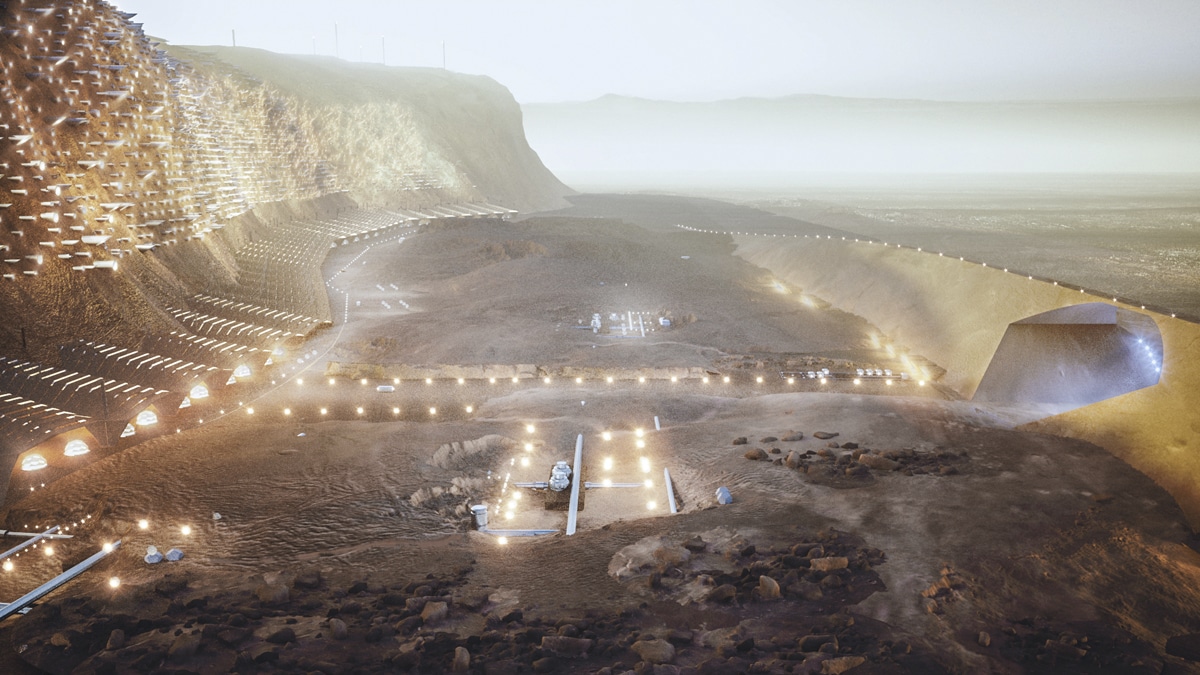
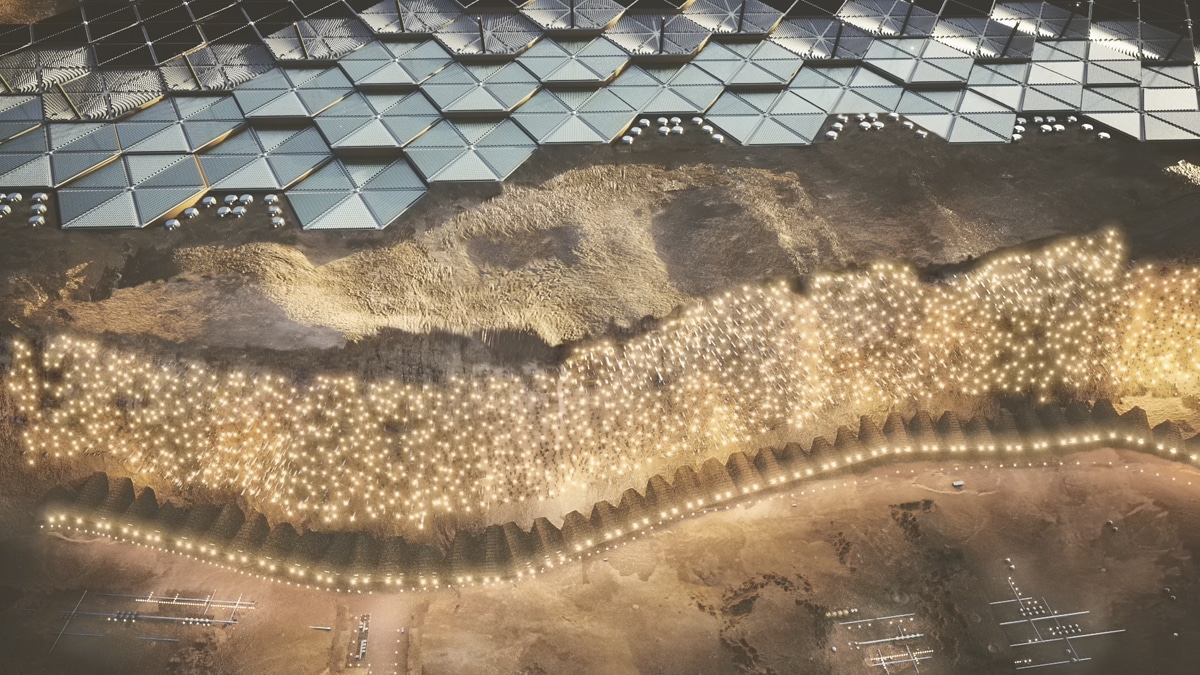
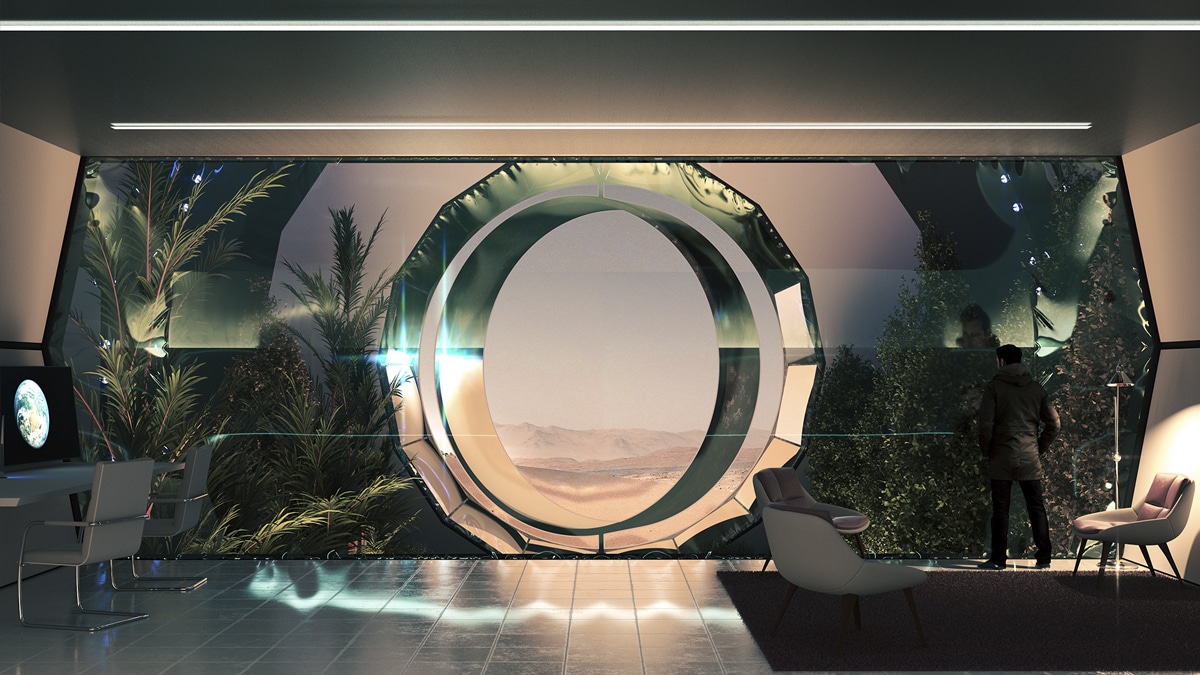
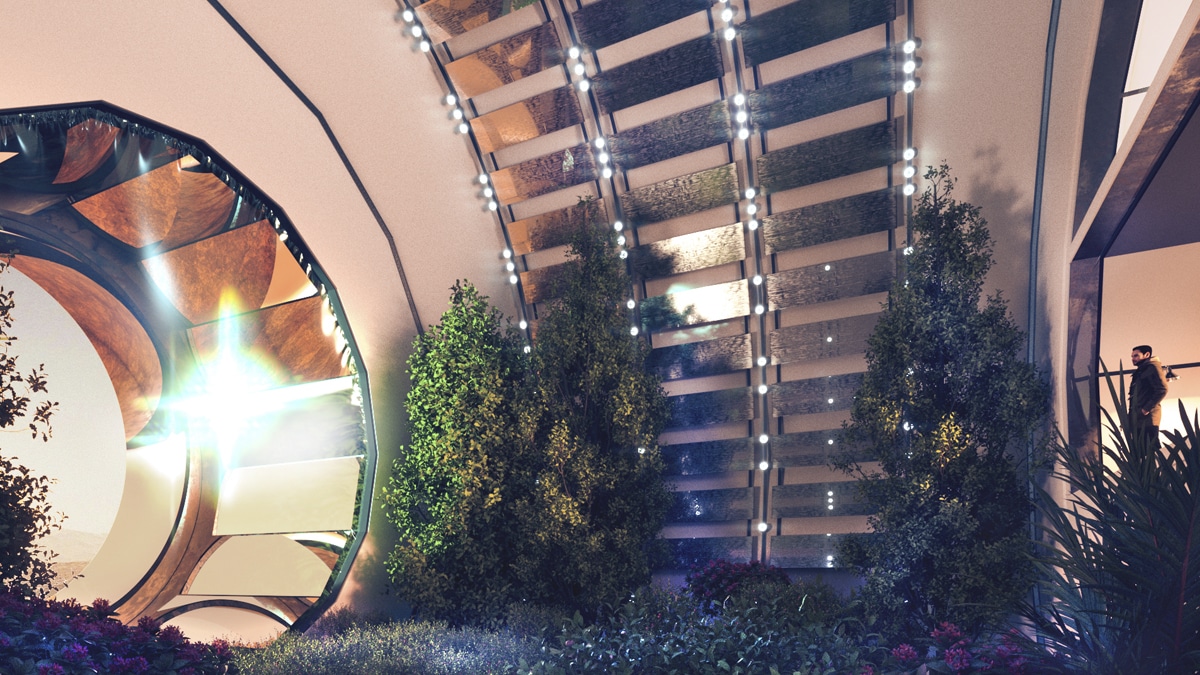
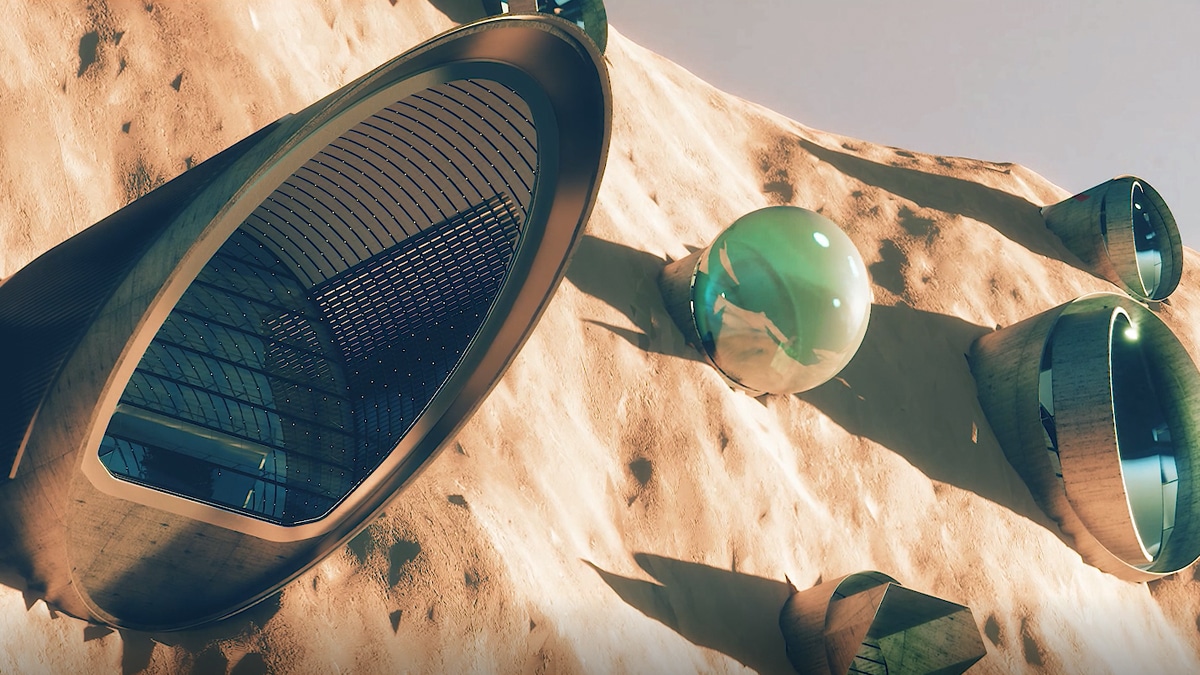
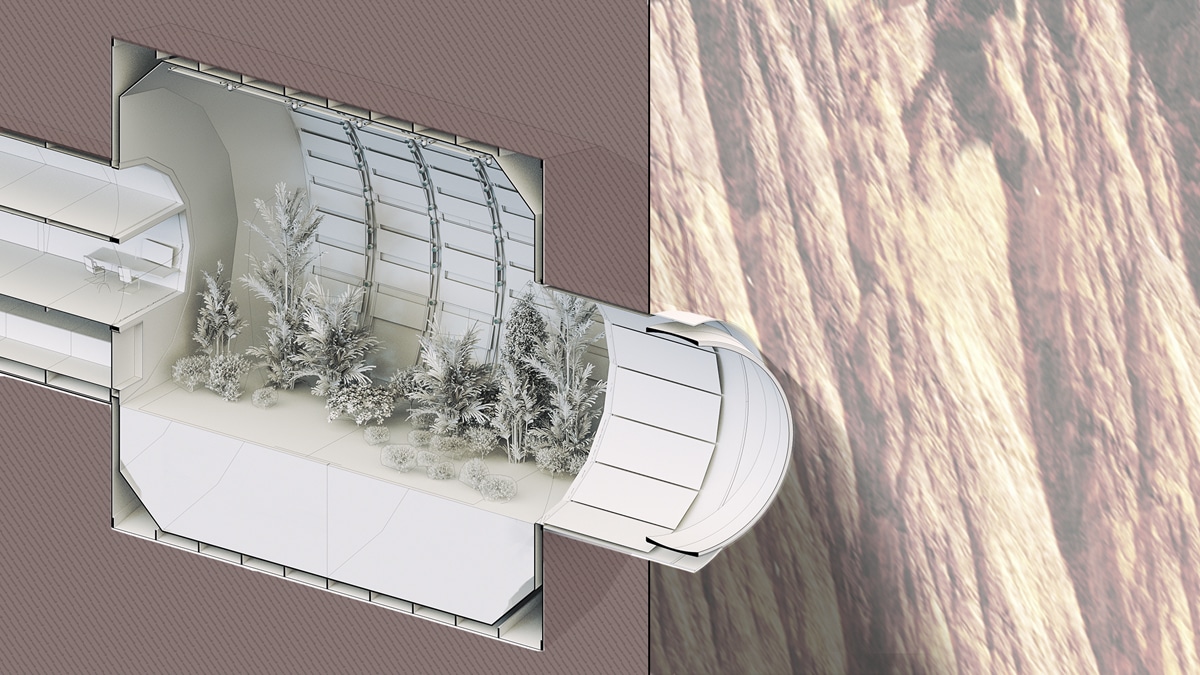



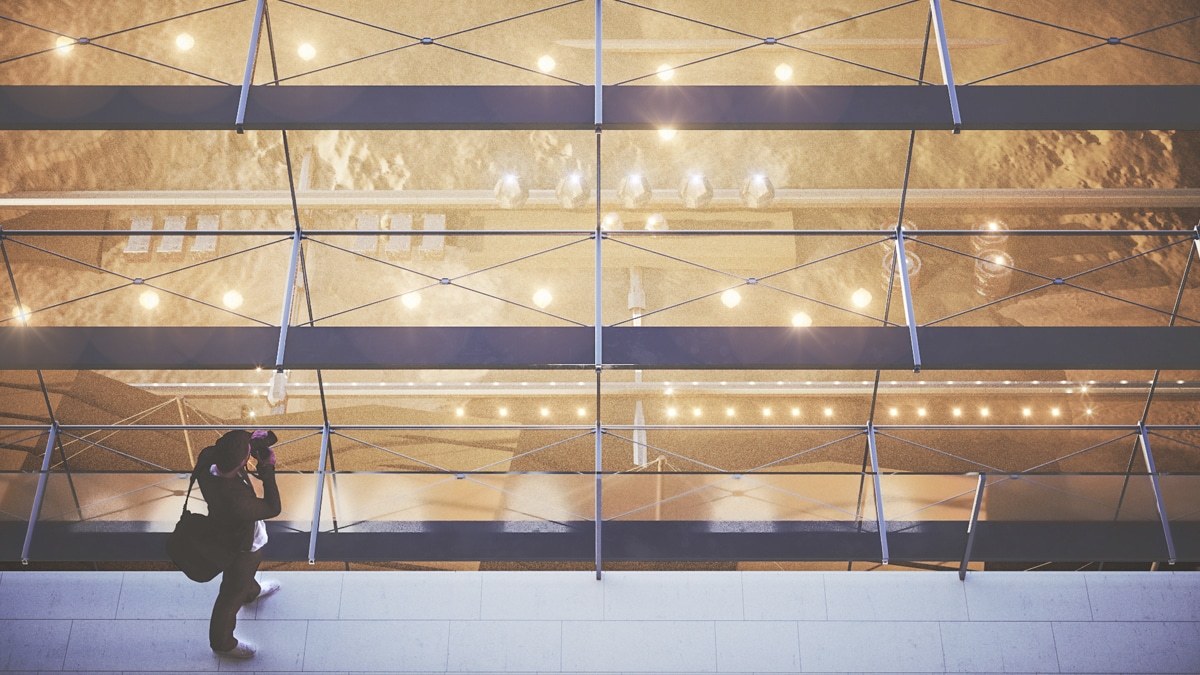
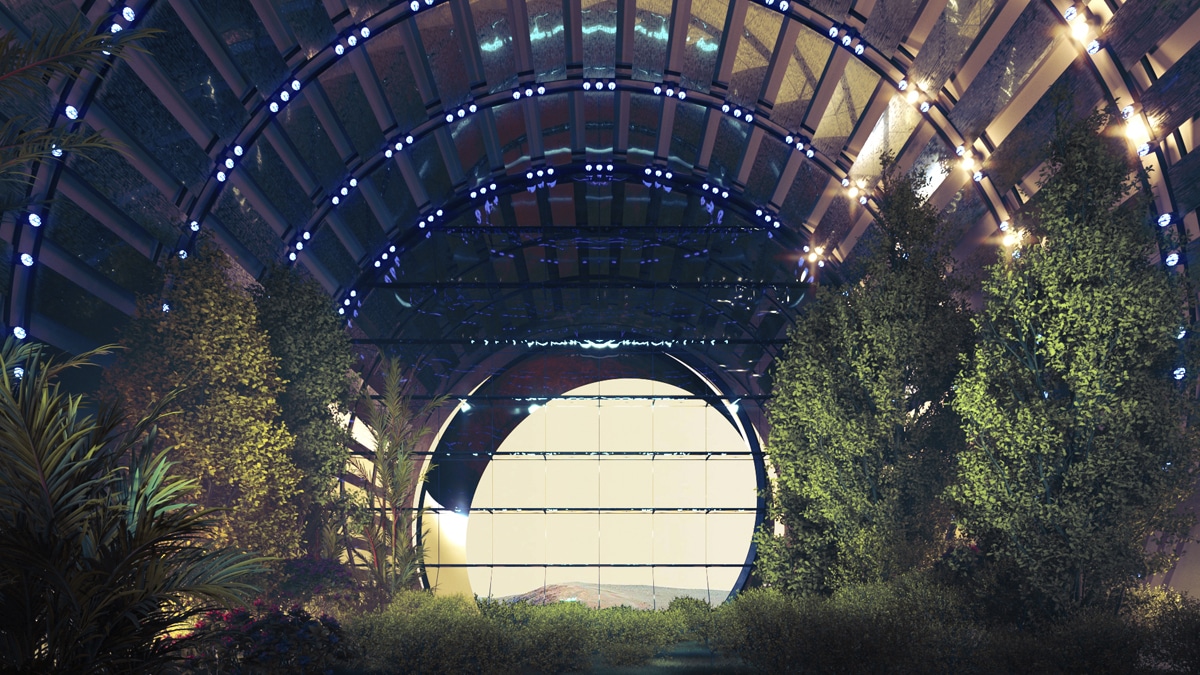


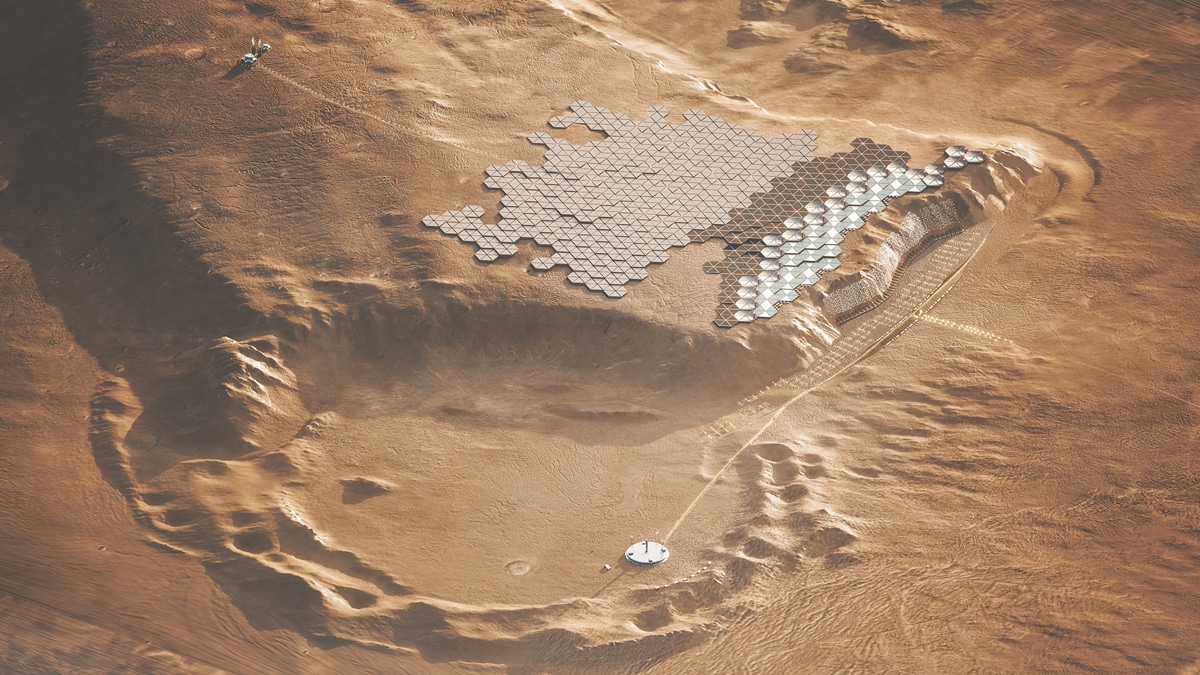


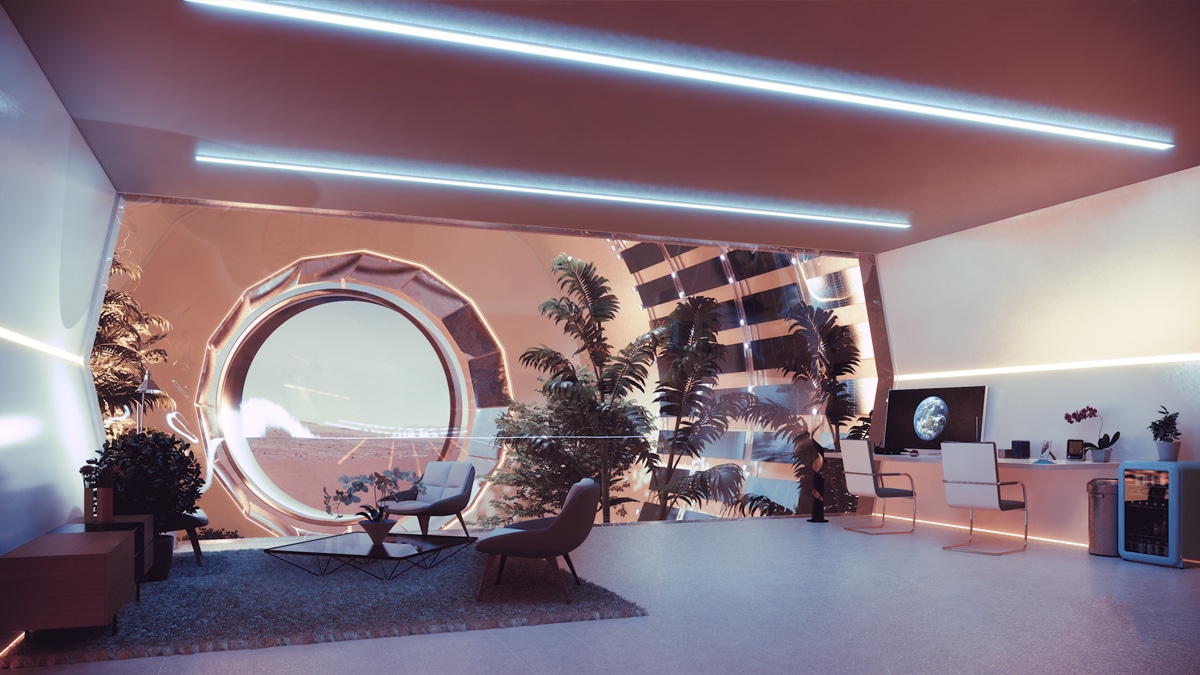
Information:
Nüwa City was ABIBOO’s first step towards creating Onteco Mars, a science-based Futuverse™ on the Red Planet. Onteco Mars aims to be an immersive digital replica of future settlements on Mars.
The city of Nüwa is on the slope of one of the Martian cliffs with abundant water access, located at Tempe Mensa. A steep terrain offers the opportunity to create a vertical city inserted into the rock, protected from radiation and meteorites while having access to indirect sunlight.
Nüwa’s name has its roots in the mythological Chinese goddess that is the protector of Humans, who melted five stones to give robust societal pillars. Five locations instead of one are chosen to improve resilience, long-term easy access to resources, and to add mobility options to the citizens of Mars. For example, Abalos City is located in the North Pole to leverage access to ice and Marineris City is located in the most extensive canyon of the solar system. Although the project divides human settlement into five cities, it offers a highly-scalable and flexible solution that can be implemented in many locations across Mars.
Sustainability, but especially self-sustainable development is at the core of the Nüwa design. For being self-sustainable, a settlement on Mars needs to be able to obtain all resources locally. After a short initial phase relying on capital investments and supplies from Earth, the system should be able to sustain its growth with local resources only.
The main activities are performed inside the cliff, in what are called “Macro-buildings“, which are excavations inside the rock of the cliff. These constructions, implemented after tunneling, are modular and include residential and work activities, linked together by a three-dimensional network of tunnels. By giving this standardization, the design ensures scalability and reduces complexity, costs, and construction schedules.
When those tunnels reach the vertical Wall of the cliff, artificially created natural spaces function as buffer zones. They are named “Green-Domes,” and there are two types: those that allow human presence and act as parks, and those that include experimental vegetation in an environment with a purely Martian atmosphere.
The “Macro-buildings” on the cliff are connected by high-speed elevator systems, similar to skyscrapers on Earth. This infrastructure also connects the bottom of the cliff with the top and has intermediate stops at the “sky-lobbies“, that connect the “Macro-buildings” with a separate elevating system. At the base and top of the Wall, a system of light trains and buses is used to move in the longitudinal direction of the cliff. City to city transport is done with trains of buses/ wagons on paved roads.
The highest point of the cliff is the Mesa. This vast plain contains the infrastructure dedicated to manufacturing, food production, and energy generation. Agricultural and energy production facilities require direct access to sun radiation but do not need a shield from radiation, as only maintenance personnel and robotics will be operating there. Crop cultivation would be the main food production source, providing 50% of the human diet, while processing CO2 into O2 and taking part in the water processing system.
Although crops can provide a tastier and more varied diet than microalgae, those are more efficient in terms of space and resource utilization, while also contributing to atmosphere revitalization and water management. Thus, microalgae would be the principal component of the human diet.
At the foot of the cliff, large pavilions have been located for social interaction in the Valley. These pavilions have been designed with translucent skin to offer views of the landscapes of Mars. These domes are protected from external radiation by large overflying canopies. The material from the cliff’s excavation is dumped on top of such roofs, protecting from radiation. At the same time, this strategy ensures recyclability even at a large-scale. In the Valley, there are also specific structures to house hospitals, schools and universities, sports and cultural activities, shopping areas, and train stations that communicate with the space shuttle.
Farming areas for animals and insects have been located at the Valley, close to communal city areas, as they need a human-like atmosphere to live. Typical farm animals such as pigs, chicken, or fish would also be included, but would represent a small part of the human diet: such animals are very inefficient but provide a high psychological value.
The landscape is a fundamental element in Nüwa and its sister cities. The location itself, being able to live inside a cliff, is a powerful emotional experience. The integration of the buildings with the landscape transforms the city into a land-art, creating a unique identity for its citizens. Additionally, arts will be a critical part of Society on Nüwa. Each Macro-Building includes Art-Domes to encourage and inspire the citizens. Recreation facilities engage citizens in physical activities such as sports, games and fitness, social activities, camping, and arts & crafts activities.
For getting from Earth to Mars, a regular shuttle service should be able to function, with launch windows opening approximately every 26 months and lasting between one and three months. For settlers, one Mars ticket will have an approx. the price tag of $300K and it includes a one-way trip, one residential unit of ~25-35 m2/person, full access to common facilities, all life support services & food, and a binding work contract to devote between 60% and 80% of their work time to tasks assigned by the city.
Nüwa and its sister cities exponentially accommodate their population. After an initial short period of capital investment and supply from Earth, this urban development on Mars maintains and grows by its means and sustainable manner. All the materials required for constructing the city are obtained on Mars by processing Carbon and other minerals.
For detailed information about the project, please visit ABIBOO’s Think Tank.
For more of our work regarding the Red Planet, please visit Onteco Mars.
Location: Tempe Mensa, Mars.
Tipology: Extreme Environments & Townships.
Plot Size: N/A
Build Up: 600 Million Sq. Ft.
Services: Urban Planning, Architecture
Credits:
Nüwa is the result of the interdisciplinary collaboration of international scientists, European universities, and designers as an initiative from SONet. The founder of ABIBOO Studio is a co-Founder and Board member of SONet. ABIBOO Studio co-sponsored this initiative and headed & coordinated the architecture and urban design.
Design Team of Nüwa:
Preliminary Analysis & Urban Configuration: Alfredo Muñoz; Owen Hughes Pearce
Detailed Architecture & Urban Design: Alfredo Muñoz; Gonzalo Rojas; Engeland Apostol; Sebastián Rodríguez; Verónica Florido
Identity & Graphic Design: Verónica Florido; Engeland Apostol
Video Direction & CGI: Sebastián Rodríguez; Gonzalo Rojas
Project Coordination, Economic model & High-level concepts of Nüwa:
Guillem Anglada-Escudé, Ph.D.; RyC fellow in Astrophysics; Institut for Space Science/ CSIC & Institut d’Estudis Espacials de Catalunya
Co-coordination. Space, Earth-Mars transportation & Socio-economics of Nüwa:
Miquel Sureda, Ph.D; Space Science and Technology Research Group, Universitat Politècnica de Catalunya & Institut d’Estudis Espacials de Catalunya
Life Support, Biosystems & Human factors of Nüwa:
Gisela Detrell, Ph.D; Institute for Space Systems, Universität Stuttgart
Mars Materials & Location of Nüwa:
Ignasi Casanova, Ph.D.; Prof. Civil and Environmental Engineering; Institute of Energy Technologies (INTE), Universitat Politècnica de Catalunya
Manufacturing, Advanced Biosystems & Materials of Nüwa:
David Cullen; Prof. of Astrobiology and Space Biotechnology; Space Group, University of Cranfield
Energy & Sustainability of Nüwa:
Miquel Banchs i Piqué; School of Civil Engineering & Surveying, University of Portsmouth
Mining & Excavation systems of Nüwa:
Philipp Hartlieb; Prof. in Excavation Engineering, Montan Universitaet Leoben
Social Services & Life Support Systems of Nüwa:
Laia Ribas, Ph.D; RyC fellow in Biology, Institut de Ciències del Mar/CSIC
Mars Climate modeling & Environment of Nüwa:
David de la Torre; Department of Physics, Universitat Politècnica de Catalunya
Contributors of Nüwa:
Jordi Miralda Escudé (ICREA Prof. in Astrophysics – Ground Transport, UB; Rafael Harillo Gomez-Pastrana (Lawyer, – Political Organization & Space law); Lluis Soler (Ph.D. in Chemistry – Chemical processes, UPC); Paula Betriu (Topographical analysis, – UPC); Uygar Atalay (Location, temperature & Radiation analysis, UPC); Pau Cardona (Earth-Mars Transportation, UPC); Oscar Macia (Earth-Mars Transportation, UPC); Eric Fimbinger (Resource Extraction & Conveyance, Montanuniversität Leoben); Stephanie Hensley (Art Strategy in Mars); Carlos Sierra (Electronic Engineering, ICE/CSIC); Elena Montero (Psychologist); Robert Myhill (Mars science – U. Bristol); Rory Beard (Artificial Intelligence)
Financial Sponsors of Nüwa:
CSIC (Consejo Superior de Investigaciones Científicas); ABIBOO Studio; UPC (Universitat Politécnica de Catalunya); Cranfield University; University of Stuttgart; IEEC (Institut d’Estudis Espacials de Catalunya); Montan University Leoben; Institut de Ciencies del Mar; University of Portsmouth.